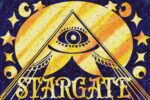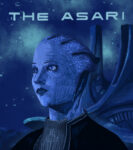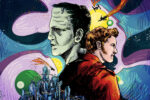More often than not, when the words “fantasy” or “science fiction” are uttered among academic or scholarly groups, they are met with a resounding groan, as the terms imply a genre that is usually decried as something created simply for the masses.
N. K. Jemisin breaks those stereotypical walls surrounding the fantasy genre in her new novel, “The Fifth Season.” It may not be her first novel, but it is arguably the work that brought her name into greater circulation amongst the general population. “The Fifth Season” was the first novel in the “Broken Earth” trilogy and the winner of the 2016 Hugo Award for best novel. All three books in the series actually won the Hugo Award separately — a trilogy rife with accolades.
So, what about “The Fifth Season” separates it from the rest of the science fiction/fantasy genre?
To start, the novel surrounds itself around an ecological platform exploring characters’ relationships to Earth, signifying a larger metaphor about how human beings relate to Earth in reality. The Earth is the basis for the novel’s created society in every possible aspect. The laws, slurs, relations and, yes, the caste system created in this world all revolve and directly relate back to the Earth. Moreover, the magic of this world, orogeny, is an Earth-based magic tied to the tectonic activity and life source surrounding the practitioner.
However, where Earth is typically associated with being a life-giving source, “Mother Earth,” within the novel, Earth is characterized as “Father Earth,” an entity that can create catastrophic destruction. This destruction can last centuries and is termed a “Season” within the framing of the novel.
The breakdown of the actual society of Stillness (the name of the place is even based on tectonic activity), the continent explored in the first novel, is constructed on the basis of these Seasons. “Comms” can be found across the super-continent, and these comms are essentially communities formed and based after Seasons. Some will last and some will disappear, never to breathe life again. This world of Stillness is also split into castes, divisions that break down around the usefulness of an individual to continue the survival of the comm: Strongbacks, Resistants, Innovators, Leadership and Breeders.
Yet, all castes fall away when one is deemed an orogene.
These individuals are anything but praised in the first novel. In fact, they are seen as those who are cursed by Father Earth and, if discovered before any acting agency, often murdered and lynched by comms out of fear and hatred.
This is where the Fulcrum steps in. The Fulcrum is a location, or governing entity, that takes and also breeds orogenes with the purpose of training them to quell earthquakes and fix tectonic problems around Stillness. Within the Fulcrum resides the Guardians, beings who protect and train orogenes and constantly remind them that they are monsters disposable at any point in time if deemed no longer useful or a threat to others.
The elements of this earth-based society stand as a direct commentary on our current society, meaning the novel is purposely pushing the boundaries of what a “science-fiction” book can do.
Beyond simply providing a new form of magic and society, the novel’s structure is wonderfully complex in its underlying plot.
A note at the beginning of the book says, “This is what you must remember: the ending of one story is just the beginning of another … But this is the way the world ends … For the last time.” Finality courses through this message that directly addresses readers before they enter the world of Stillness. A tone of tension is produced from the first word. The long buildup found in some fantasy novels does not exist here, as we are asked to immediately be on edge.
The prologue continues to break the sacred fourth wall, saying, “Let’s start with the end of the world, why don’t we? Get it over with and move on to more interesting things.” This voice doesn’t claim an identity, but rather narrates and tries to explain what is happening that causes the end of the world for the final time.
Aside from boiling tensions and ecological concern, the novel also follows the lives of three female orogenes: Damaya, Syenite and Essun.
Essun is an the oldest of the three, a mother of two and, yes, she is an orogene. At the start of the novel, her son has been murdered by her husband. The reason, at Essun believes, is that her husband must have found out that their child was an orogene. Both their children are orogenes, just like Essun. But, Essun’s husband has fled their small comm with their daughter, leaving their son behind to be found by Essun. She understands if she hasn’t already been discovered as an orogene, she soon will be, and her story follows her path to find her daughter.
Syenite is a young orogene within the Fulcrum rising in status and growing in her abilities. She is matched with an elder and sent on a mission to help a comm with a growing coral problem. Along the way, she realizes the Fulcrum has been hiding major secrets and manipulations in trying to control all orogenes.
Damaya is the youngest of the three, a child newly taken to the Fulcrum to be trained after escaping being mobbed by her own comm after accidentally killing another child.
All three are absolutely connected, but I’ll end there as to avoid clear spoilers.
So, the novel, in its totality, is a beautifully crafted piece of art, painstakingly constructed in its plots and dynamics. And, to add to its separation from most mainstream fantasy, “The Fifth Season” also depicts characters who are not white and characters who do not abide by assigned gender or sexual stereotypes — a needed change within a genre that can sometimes be associated within a remaining set of boundaries and barriers.
“The Fifth Season” is an utter jewel of a novel that goes beyond trying to create a simple story, taking its own backbone and illustrating moral and cultural battles and questions while not losing itself inside the magic system it has created.
As Jemisin writes, “‘The Fifth Season'” is a book “[f]or all those who ahem to fight for the respect that everyone else is given without question.”















